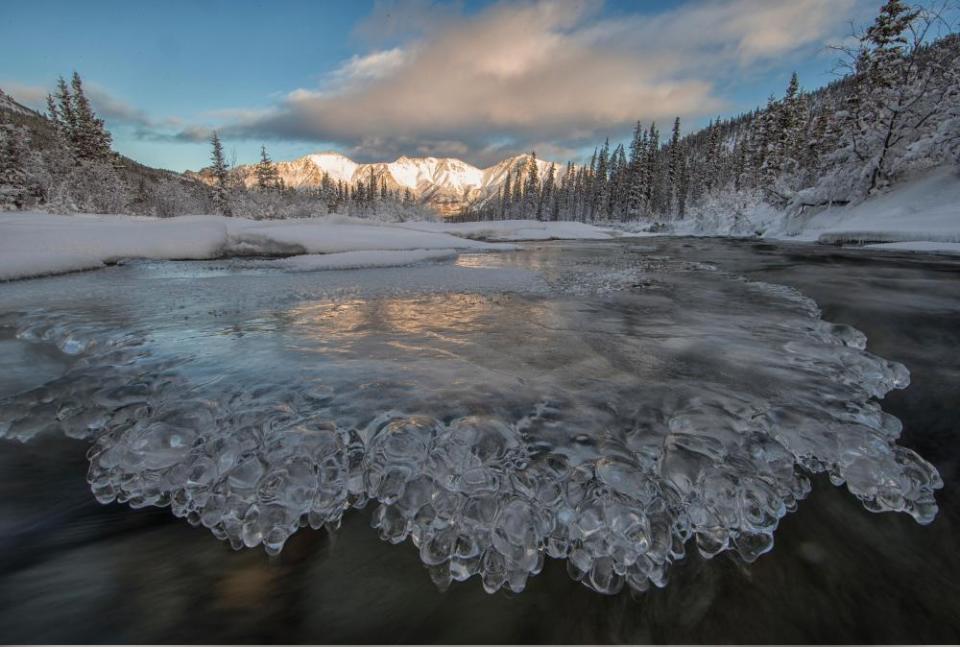BBC’s Race Across the World stirs Canadian hopes of UK tourist boom
Canada’s tourism industry this week expressed hopes for a rise in UK visitors after the third series of BBC’s Race Across the World launched in the UK to rave reviews.
The reality show, in which five couples travel 10,000 miles (16,000km) from one side of Canada to another on a shoestring and without flying, could be a boon to the country’s recovering tourism sector. Arrivals were down 40% in 2022 from their high in 2019, but there are hopes for an increase with UK viewers inspired by the epic scenery and charmed by helpful Canadians.
This year is already looking better in Newfoundland and Labrador, said Candice Walsh, of the province’s department of tourism, who was “thrilled” to learn that the race’s finish line is in the capital, St John’s. “We’re still recovering, but we’re hearing that bookings are coming in earlier than ever and numbers continue to rise close to 2019 levels.”
As the race started in Vancouver, the five teams dashed away – that’s if they could find their way out of Stanley Park – for Tlell on the distant archipelago of Haida Gwaii, 745 miles up the coast of British Columbia, reached only by ferry, and known as the “Canadian Galapagos”. Showcasing remote locations appears to be a goal of the show and this could lead visitors to explore beyond the country’s tourism hotspots.
Maureen Riley, vice-president for international markets at Destination Canada, said: “The UK has always been a top market for Canada, and initial Twitter comments are showing that the first episode has already inspired Brits to start researching trips to Canada. As the show carries on over its nine episodes to explore lesser known areas of our country, hopefully it will encourage Brits to go deeper, further and stay longer.”

Haida Gwaii, home to the Haida people for more than 10,000 years, will offer the adventurers the opportunity to meet totem-pole carvers and kayak the astonishing Gwaii Haanas national park reserve while learning about Indigenous traditions and art springing from a deep relationship with the land, sky and ocean.
The first episode has already shown that overland travel can be a challenge in Canada with sporadic ferry services, few rail lines that cross the country and a patchy bus network suffering reduced services since the pandemic. Father and daughter team Kevin and Claudia miss the bus from Campbell River to Port Hardy on Vancouver Island by 45 minutes and pay C$500 (£300) for a taxi to avoid being stranded. Contestants will have to be a bit more creative and rely on the kindness of strangers if they want to stretch their budgets. Childhood friends Cathie and Tricia appear to have picked up quickly on the Canadian reliance on car-sharing, while Zainib and Mobeen tap into the freewheeling outback spirit of locals like Corey who barely hesitates before taking them on a 10-hour ride from Prince George to Prince Rupert to catch the ferry to Haida Gwaii – and is quickly knocked down from C$500 to C$250 for the pleasure.
As they head north to the territory of Yukon, north of British Columbia, in episode two, the teams will probably hike, paddle, cycle, or dogsled part of the 17,400-mile Trans Canada Trail that links the Pacific, Arctic and Atlantic oceans – the world’s longest multi-use recreational trail.
It takes effort and patience to reach the north but they will be rewarded with singular landscapes and rich cultures. There has been a strong push to use sustainable tourism to develop the economy here and Indigenous peoples are leading the effort. For example, several Indigenous governments manage Canada’s newest national park reserve, Thaidene Nëné, in the Northwest Territories. This lies within the vast geological area known as the Canadian Shield, and is accessible only by float or ski plane, boat or snowmobile. Whitehorse, the Yukon’s capital, has meanwhile become an outdoor adventure mecca without the Rockies’ crowds.
From Canada’s northern lakes and forests, the teams will travel south and east. And while many might think the prairie provinces are fly-over country, they have plenty to offer. Winnipeg, in southern Manitoba near the US border, for example, is home to the world’s largest collection of Inuit art.
There’s an awful lot of Canada. Time will tell if UK viewers come to discover it. One posted: “This is one giant advert for tourism in Canada and it’s working as I want to go to Canada now.”


